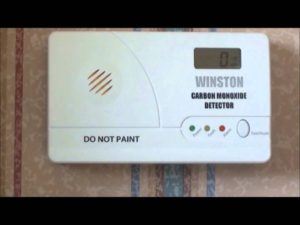This is a great article posted on the cnet.com website, giving details about how carbon monoxide detectors work. It also looks at why CO is so dangerous and breaks down what the alarms are doing when they detect CO gases in the environment . More CO blog posts available on Medium.
How carbon monoxide detectors work
Carbon monoxide is a killer. This colorless, odorless gas is a normal side product of the combustion of things such as the gas or oil that heats your house. Normally, this is only released in very small amounts and is dispersed into the atmosphere through a vent or chimney. However, if a heater is only partially burning fuel or there isn’t enough ventilation, it can quickly become a problem, because even small amounts can be fatal. That’s why laws were passed that required carbon monoxide detectors to be fitted to most homes, offices and other buildings. Let’s look at how these devices detect this stealthy killer.
How carbon monoxide kills
Carbon monoxide is a stealthy killer. An amount as low as 10 parts per million (ppm) can cause headaches, and 600 ppm levels can quickly lead to unconsciousness and, eventually, death. That’s how it kills most people: it puts them to sleep, then kills them while they sleep. The effect of low concentrations mounts over time, with even a very low concentration causing adverse effects if you are exposed for long enough. That’s because of the sneaky way it harms the body.
Carbon monoxide blocks the ability of your blood to carry oxygen, replacing the spot that oxygen takes on the hemoglobin in your red blood cells. This iron-rich compound is how your blood carries oxygen around the body, and carbon monoxide bonds to hemoglobin much tighter than oxygen alone. Over time, as more and more hemoglobin is blocked from doing its job by carbon monoxide, your blood just can’t carry enough oxygen to keep your tissues going, especially the brain. They begin to fail, causing headaches, nausea, unconsciousness, and eventually, death.
How carbon monoxide detectors work
There are several different ways to detect carbon monoxide, but most home carbon monoxide detectors use an electrochemical sensor. These rely on how the behavior of a chemical changes when carbon monoxide is around.
Inside the carbon monoxide alarm is a small sensor with three electrodes on it. These three electrodes lead into a container of a chemical called the electrolyte. This container is gas permeable, meaning that gas from the atmosphere can pass freely into and out of it. A small voltage is applied between two of the electrodes (called the working and the reference electrodes). When carbon monoxide enters the sensor, it reacts with the oxygen also present in the atmosphere, releasing an electron and creating a small current between the electrodes. Some sensors use electrodes coated with platinum or other metals that catalyze the reaction of carbon monoxide and oxygen, helping it to happen quicker than it would normally.
This small current is what a carbon monoxide detector is looking for. It uses this to measure the amount of carbon monoxide: the more of it there is in the air, the more current the sensor generates. Some sensors show you the carbon monoxide level on a display: a useful feature that helps to reassure that the sensor is working. When the current (and thus the carbon monoxide level) has reached a certain level, it triggers the alarm. Typically, they will sound the alarm immediately if they measure a level of above 400 ppm.
It isn’t just a case of raising the alarm once the amount goes over a certain level, though. As well as warning you if the level of carbon monoxide suddenly rises, a carbon monoxide detector should also warn you if it detects a low level over a long period, because this could indicate that the carbon monoxide being produced by a heater or other combustion source is not being dissipated as it should. Typically, a good carbon monoxide alarm will warn you if it detects a level of above 20 ppm for longer than a couple of hours.
Read the full article here How Carbon Monoxide Detectors Work ,originally published on Cnet.com
Please continue reading the article at the above link as it gives even further understanding of carbon monoxide and hopefully, once again, highlights the dangers of this gas. Having a working carbon monoxide alarm is critical in maintaining your household safety, choose yours today.


